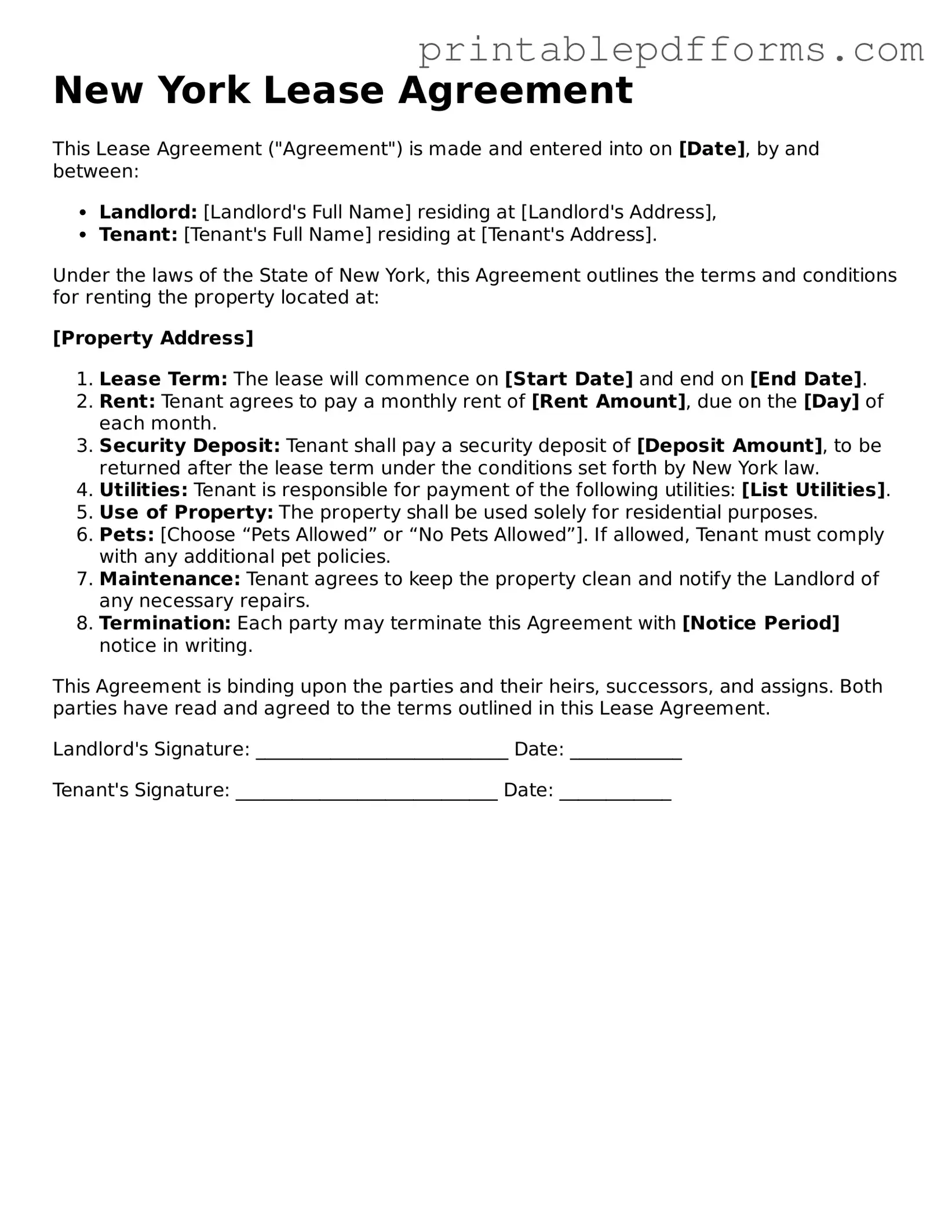What is a New York Lease Agreement?
A New York Lease Agreement is a legal document that outlines the terms and conditions between a landlord and a tenant for renting a residential or commercial property. This agreement specifies the duration of the lease, rent amount, payment schedule, and responsibilities of both parties. It helps protect the rights of both landlords and tenants while providing a clear framework for the rental relationship.
What are the key components of a New York Lease Agreement?
Several important elements should be included in a New York Lease Agreement:
-
Parties Involved:
Names and contact information of both the landlord and tenant.
-
Property Description:
Address and details of the rental property.
-
Lease Term:
Start and end dates of the lease.
-
Rent Payment:
Amount due, payment methods, and due dates.
-
Security Deposit:
Amount required and conditions for its return.
-
Maintenance Responsibilities:
Who is responsible for repairs and upkeep.
-
Termination Conditions:
Guidelines for ending the lease early or renewing it.
How long is a typical lease term in New York?
Lease terms in New York can vary widely. Most residential leases are either one year or month-to-month. A one-year lease provides stability for both parties, while a month-to-month lease offers flexibility. Commercial leases may have different durations, often ranging from one to five years or longer, depending on the needs of the business.
Can a landlord raise the rent during the lease term?
Generally, a landlord cannot raise the rent during the lease term unless the lease agreement specifically allows for it. In New York, rent increases are typically governed by the terms of the lease. However, landlords can adjust rent when a lease expires and a new lease is negotiated. For rent-stabilized apartments, there are specific regulations that dictate how much rent can be increased.
What happens if a tenant wants to break the lease early?
If a tenant wishes to break the lease early, they should first review the lease agreement for any clauses regarding early termination. Many leases include a penalty for breaking the lease, which could involve forfeiting the security deposit or paying a specified fee. Open communication with the landlord is essential, as they may be willing to negotiate terms or allow for a sublet.
Are there specific laws governing lease agreements in New York?
Yes, New York has specific laws that govern lease agreements, particularly for residential properties. The New York State Multiple Dwelling Law and the New York City Rent Stabilization Law provide protections for tenants. These laws cover issues like rent control, eviction procedures, and tenant rights. It's important for both landlords and tenants to be aware of these laws to ensure compliance and protect their rights.
How can I ensure my lease agreement is legally binding?
To ensure that your lease agreement is legally binding, follow these steps:
-
Make sure both parties sign the document.
-
Include all necessary details, such as names, property address, and terms.
-
Consider having the lease notarized for added legal weight.
-
Keep copies of the signed lease for both the landlord and tenant.
By following these guidelines, you can create a solid lease agreement that protects both parties.
